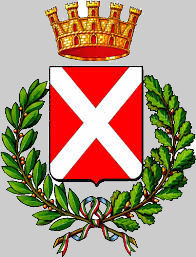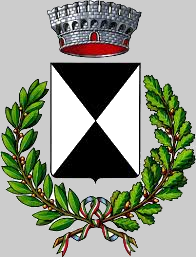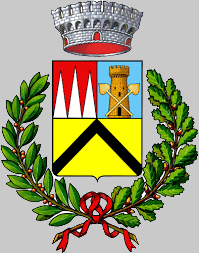|
Award "The Tagliamento and the First World War"
Under the patronage of:

City of
San Daniele del Friuli
|

Town of
Ragogna
|

Town of
Pinzano al Tgl.to
|

Town of
Forgaria nel Friuli
|

Great War Museum
of Ragogna
|
Award “Il Tagliamento e la Grande Guerra”
The ARI Section of the The Italian Amateur Radio Club of San Daniele
del Friuli promotes the award “Il Tagliamento e la Grande Guerra” in
order to celebrate the 100 years anniversary of the combats occurred
during the First World War in the area between the River Tagliamento
and the Mount Ragogna.
The award
wishes to honour fallen, wounded and prisoners of all armies and the
suffering of the people of Friuli during the enemy occupation.
From October
30th and November 3rd, 1917, one of the most important engagements of
the withdrawal was fought among Pinzano, Ragogna and Forgaria: the
Battle of Ragogna and the Breakthrough of Cornino.
On October 30th no less than four imperial divisions converged towards
the Pinzano and Cornino bridges, whose defenses were centered around
Mt. Ragogna and the “ClapÓt”.
The Mt. Ragogna ridgeline was manned by the “Bologna” Brigade and other detachments under the command of General Di Giorgio.
Notwithstanding the evident inferiority in men and equipment and
the unfavorable situation for the defenders, who were fighting with a
crumbling morale and from poorly built trenches, the order by the
Italian commands was clear: “Resist at all costs!”.
The Austrian troops, after having uselessly attacked the Cornino
bridge, which was effectively defended by machine guns on the ClapÓt
islet and by the few Italian artillery pieces deployed on the right of
the river, attacked Mt. Ragogna on October 31st.
The German Alpenkorps, which Lieutenant E. Rommel was serving in,
crossing Pontaiba on November 3rd, 1917 just behind the first vanguard
units, was committed towards the Bonzicco bridge and in the Aonedis
area.
At 03:00 a.m. on November 1st, the machine gunners deployed on the
ClapÓt islet disengaged across the swollen Tagliamento towards its
right shore, damaging the Western span of the Cornino bridge that
unfortunately was not entirely demolished.
At the same time, the footbridge of Pontaiba, too, had been seriously
compromised: the one way out for the heroic infantrymen of the
“Bologna” Brigade remained the Pinzano bridge.
On the morning of November 1st, the 12th Division, supported by tens of
batteries and a regiment of the 13th SchŘtzen, launched the attack that
was meant to be decisive. But, even if they came within some 300 meters
of the Pinzano bridge, the Silesians' drive was pushed back by the
survivors of the “Bologna” Brigade.
However, given the severity of the situation, General Sanna, commander
of the 33rd Division and therefore of the whole front interested,
ordered the Pinzano bridge to be blown up. The destruction, carried out
at 11:45 a.m., closed any possibility of retreat for those who were
defending the Mt. Ragogna trenches on the left of the Tagliamento:
nevertheless, the infantrymen opposed a hopeless resistance until
sunset, when it was unavoidably overcome.
The overall commander of the Imperial 14th Army, General Otto von
Below, conceded the honors of war to the warriors of the “Bologna” and
to their valiant commander, Colonel Carlo Rocca.
Between November 1st and 2nd, with support by the daring action of the
artillery deployed right in the first line, and exploiting the
uncertain attitude of the Italian commanders, the Bosnian soldiers of
Major Redl (K.u.K. I.R. IV/4║) firstly occupied the islet of ClapÓt,
and then they assaulted the thinly stretched companies of the
“Lombardia” Brigade, entrenched on the right shore of the Tagliamento.
Notwithstanding their combative resistance, the infantrymen were
overcome, and in the night of November 3rd the Austrians of the
“Krauss” Group overwhelmed the Italian defense line, encircling and
destroying most of the “Lombardia” Brigade, which bravely fought in the
vicinity of San Rocco and on the highland of Mt. Prat.
The defensive action of Mt. Ragogna allowed the Royal Army's columns to
gain the time needed to organize an effective withdrawal, and to
complete the defense line on the new front (Piave - Grappa -
Altipiani). A doubt was cast on the invincibility of the attackers, who
had to commit significant efforts for the above-mentioned repeated
attacks. In the end, the Italian soldiers fighting between Ragogna and
Forgaria, (some 7,500 men), by withstanding the impact by enormously
stronger in numbers and equipment (at least 25,000 men), offered to the
bulk of the Royal Army that time delay that in the final analysis was
shown to be indispensable for the purposes of the recovery from the
River Piave.
(Courtesy dr. Marco Pascoli – Grande Guerra Museum – Ragogna)
|









